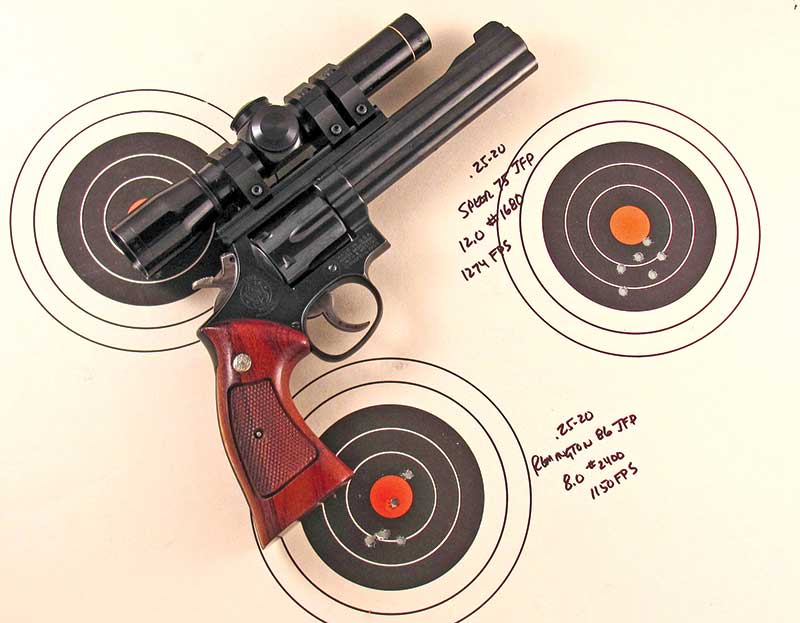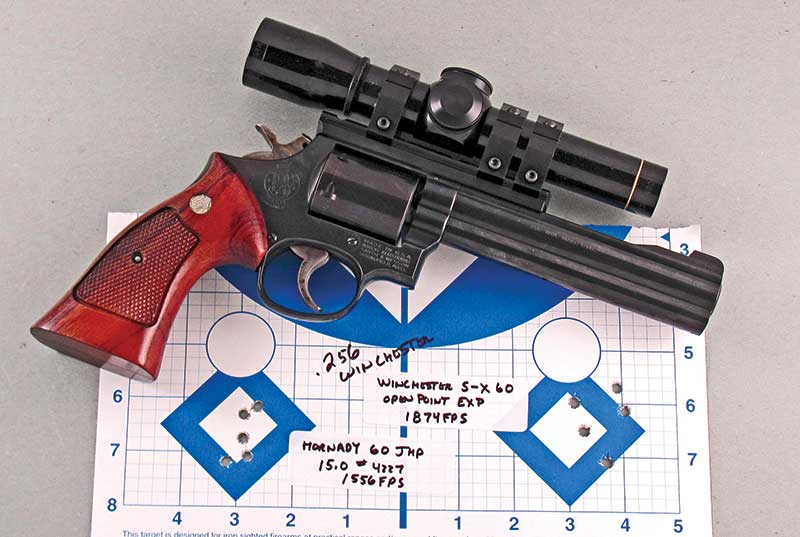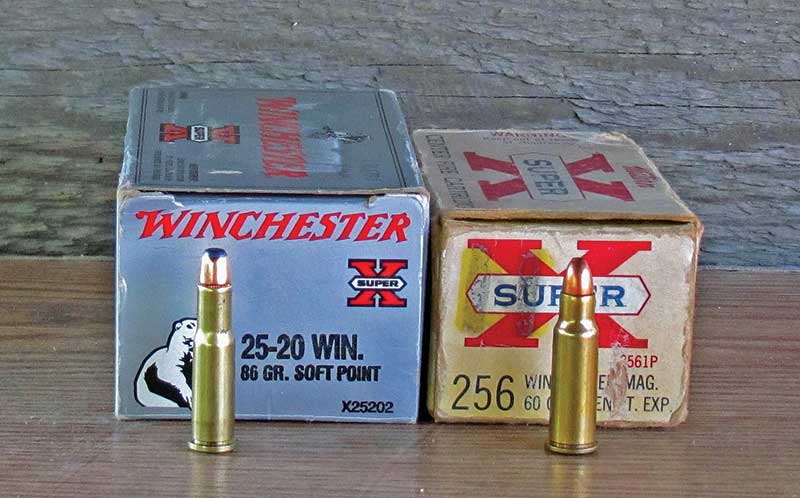Bowen Classic Arms
Quarter-Bore
.25-20/.256 In One!
It’s been my good fortune to know the greatest custom sixgunsmiths who have ever lived, simply because they are alive and well and practicing their craft now. For the past three decades I’ve been accumulating examples of the creative genius of these gentlemen, and my relatively short list numbers more than a Baker’s Dozen. At the top of anyone’s list we must find the name of Hamilton Bowen. He may share top billing with a few others, however there are none any better. Hamilton goes way beyond the title of custom sixgunsmith. Not only is he extremely talented when it comes to metalworking, he also has great imagination and artistic talent.
Over the past three decades, Hamilton Bowen’s shop has built some of biggest and baddest sixguns imaginable. But his heart, his true sixgunning heart, is with the more pleasant shooting sixguns. I know, over the years, he’s been especially appreciative of the old .32-20, and in recent years has built some very fine examples of custom sixguns chambered in the relatively new .327 Federal Magnum.
Big Bruisers
The closing decades of the 20th century, with some overlapping into the 21st century, was the age of truly big-bore handguns, led by the .454 of Freedom Arms and other truly big-bore blasters! The advance of the .327 Federal Magnum gave us all much needed relief.
Hamilton shows his true nature when he talks about this new “little” cartridge: “Those of us who are serious small-bore, small-game revolver enthusiasts have clamored for the moral equivalent of the great old .32-20 but in a more modern, tougher, available package. The cartridge fairies have been listening and have come through in grand style. The .327 Federal Magnum will perform every bit as well as hand-loaded, high pressure, high performance .32-20 loadings. Better still, the .327 is nothing more than a stretched .32 H&R Magnum, which means it’s quite small in diameter and can be built in 6-shot guns on relatively small frames.”
Small-Bore Magic
Long before the advent of the .327, in fact in the 1960s, three super high velocity small-bore pistol cartridges arrived with the .221 Fireball, the .22 Jet and the .256 Winchester. I have tried several times to make the .22 Jet work, trying just about everything imaginable which has been advanced as the secret formula and all of them proved fruitless. There is simply no way to get even close to the published ballistics without having a revolver totally locked up due to setback of fired cases. Even though I knew of all the problems with the .22 Jet, when a friend offered me one for sale at an incredibly low price; I grabbed it because I knew Hamilton Bowen was working on producing Smith & Wesson cylinders. I wanted the Smith & Wesson Model 53, not as a frustrating and poorly performing .22 Jet, but simply as a quality .22 sixgun which looks exactly like a Smith & Wesson Model 19.
Once Hamilton gave me the word I sent off my Model 53 to have a .22 Long Rifle cylinder fabricated. I was a little concerned by the fact the .22 Jet bore diameter is larger than the normal .22 LR bore but Hamilton thought it would work, and he was right. When my new cylinder came back there were a few extra things packed in the box. Since he was making Smith & Wesson cylinders Hamilton took the opportunity to make a Model 586-style Heavy Barrel sixgun with two cylinders, not in .357, but rather .25-20 and .256 Winchester.
Convertibles
Now that Hamilton has the capability of producing Smith & Wesson cylinders, you can come up with some absolutely enjoyable “little” sixguns, which puts the fun and challenge back into varmint hunting. Starting with a Smith & Wesson K-frame such as a Model 19, and by re-boring existing Smith & Wesson barrels such as those from the Models 17, 48 and 53, he has the basis for a sixgun with nary a kick in a carload. The test gun sent to me has a heavy underlugged barrel such as found on the current 10-shot Smith & Wesson Model 17 chambered in .22 LR. After re-boring the barrel to .25, he then fabricated two new cylinders, one is un-fluted and chambered in .256 Winchester, while the other in the traditional fluted style, carries a .25-20 Winchester.
Single action sixguns are usually touted as being very easy to switch cylinders and so we have seen Convertible Single Actions in such combinations as .45 Colt/.45 ACP, .44 Magnum/.44-40, .38-40/10mm and .32-20/.32 H&R Magnum. These have all been sold to the shooting public on the idea of not only great versatility, but the ability to swap cylinders, easy to do on a SA. Hamilton has made it almost as easy to switch cylinders on a double-action sixgun.
With the Smith & Wesson one simply backs out the screw on the side of the frame above the trigger, pulls the entire yoke and cylinder forward out of the frame, removes the cylinder from the yoke and replaces it with the second cylinder, inserts the yoke back into the frame, tightens the screw in the side of the frame, and the operation is complete. The only way it could be made easier it is by using two fitted-to-the-frame yokes, each with its own cylinder. Then it would only be necessary to loosen the screw, remove the yoke and cylinder in total, replace them with the second option, and tighten the screw. The problem, of course, is coming up with that second yoke.
Taper Trouble
Even though neither the .25-20 nor the .256 Winchester have the exaggerated milk-bottle shaped taper of the .22 Jet, they are still necked-down cases and revolver cylinders will not work with many loads I use in my rifles. If the loads are too hot for the cylinder, cases will set back and lock up the gun. Both ammunition and cylinder chambers must be very clean. I use patches and a spray degreaser on the cylinder charge holes. Loads must be approached carefully and when cases start backing up, it’s definitely time to back off. The .256 Winchester has the greatest case capacity and also the greatest possibility of heavier loads. Most of my shooting was done with the .25-20 cylinder in place as it’s not only so pleasant shooting, but many of my .256 Winchester rifle loads proved to be too heavy for use in the cylinder of the Bowen Smith & Wesson.
Complete results are in the accompanying table and it is easy to see how much more powerful the .256 is compared to the .25-20. The first time I ever met Hamilton, back in the mid-1980s at the Shootists Holiday, he had a Ruger Redhawk chambered in .500 Linebaugh. It was a kick to shoot in more ways than one. Both of us have advanced to the time in our life in which the emotional kick of a .25-caliber sixgun is a lot more enjoyable and satisfying than the physical kick from the big .500.
For more info: http://www.bowenclassicarms.com/ or (865) 984-3583










